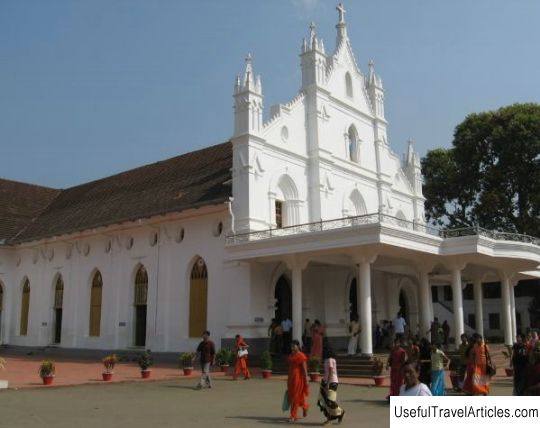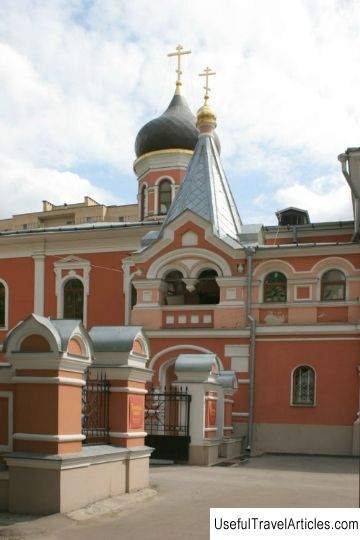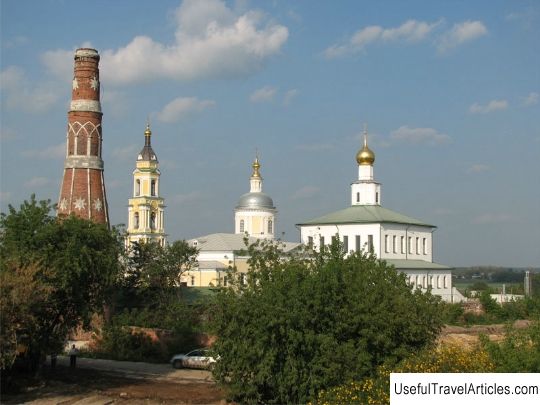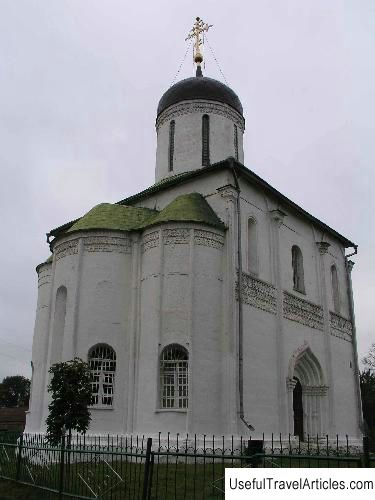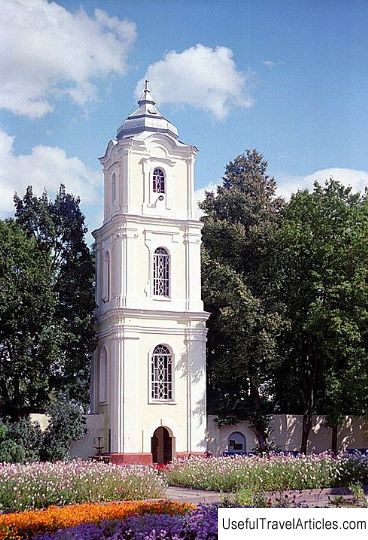Savvino-Storozhevsky monastery description and photos - Russia - Moscow region: Zvenigorod
Rating: 8,6/10 (5754 votes) 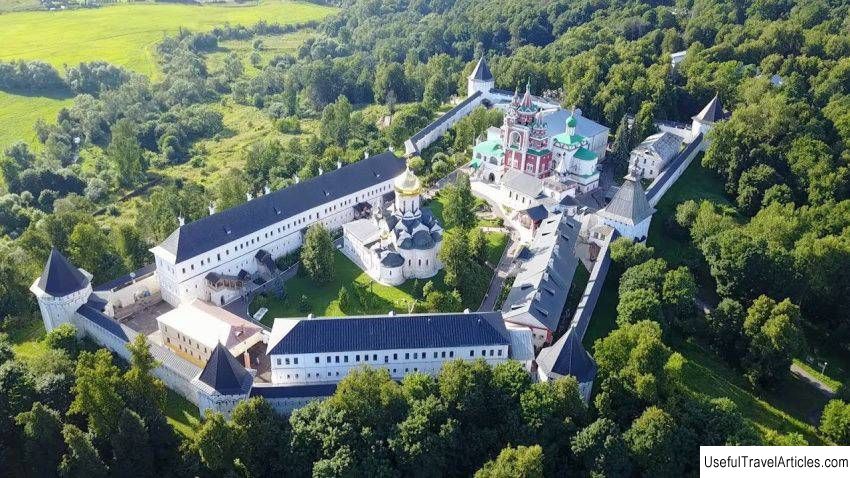
Savvino-Storozhevsky monastery description and photos - Russia - Moscow region: Zvenigorod. Detailed information about the attraction. Description, photos and a map showing the nearest significant objects. Photo and descriptionThe Savvino-Storozhevsky monastery near Zvenigorod was founded by Saint Savva, a disciple of Sergius of Radonezh in the XIV century. In the 17th century, Tsar Alexei Mikhailovich made it his residence. He built powerful fortifications, new temples, a palace for himself and his wife. Now there is a functioning monastery, one of the most beautiful in the Moscow region, and a museum telling about the life of the royal family in the 17th century and the history of this region. Savva StorozhevskyThe Monk Savva - one from the closest pupils of Sergiy Radonezhky . He was the confessor of Sergius himself and the entire Trinity monastery, instructed the family of Dmitry Donskoy : he was the confessor of his widow Evdokia and his son, Prince Yuri of Zvenigorod. At the request of the prince, he moved here from the Trinity Monastery and founded his own. This was in 1398. The monastery is called Storozhevsky by the name of the Watchtower mountain on which it was built. Initially, the monastery was small and wooden, but after a successful campaign against Bulgaria, which took place with the blessing of hegumen Savva, Prince Yuri allocated money for the construction of a stone church. Cathedral of the Nativity of the Virgin has survived since that time. In the monastery you can see excavations - the open foundations of the first monastery gates and the refectory of the 15th century. History of the monastery During the Time of Troubles, the monastery was severely ruined, and all the brethren, together with the rector, were killed by the Poles. They began to rebuild already under the first Romanovs. In 1647 the canonization of Saint Sava took place, and in 1650 his relics were "found" in the monastery. Alexey Mikhailovich believed that he owed the saint his life: while hunting in the Zvenigorod forests, a huge bear attacked him. The king was already preparing to say goodbye to life. But then a monk came out of the forest and pacified the bear. He called himself Savva, and soon the king realized that the saint himself had appeared to him. In the same year, Alexey Mikhailovich donated money for a new large construction. Brick factories arose around the monastery, and thousands of workers gathered here. The Tsar actually made this place his summer residence, declared it a laurel and equated in status with the Trinity-Sergius. In the 18th century, the monastery gradually loses its significance, although the royal people still come here. Since the middle of the 18th century, a seminary has been located within its walls. In the 19th century, Pushkin repeatedly visited here - the estate of his grandmother, Zakharovo, is located nearby. The monastery is loved and honored by the Moscow Metropolitan Filaret Drozdov . After the revolution, the monastery is closed. The relics of St. The Savvas were opened and confiscated, only a part of them remained in the family of one of the believers. The first attempt to uncover the relics provoked a stormy protest and went as far as killing the commissars, but the “Zvenigorod rebellion” was suppressed by force. The property from the monastery sacristy is placed in the museum. The buildings are used as a sanatorium and club , part of the territory is transferred to a military unit. The revival of the monastery began in 1995, and in 1998 the 600th anniversary was magnificently celebrated. Then the miraculously survived part of the relics of Saint Sava was returned to the monastery and a large-scale restoration began. The restoration is still going on, but the main part of the buildings has already been put in order. In 2007, a monument to its founder appears in front of the monastery. What to see During the grandiose construction in 1650, the monastery was surrounded by a stone wall . After the war, the Moscow state urgently strengthened its borders and this place became the main fortress that protected Zvenigorod. Now the keys to the city were kept here, there were powder depots , and under the walls of the monastery there was a military garrison with guns . The height of the walls is about nine meters, thickness is about three. six towers have survived to this day (originally there were seven). Now part of the wall and towers is available for inspection - you can climb the wall. The main cathedral of the monastery was consecrated in honor of Nativity of the Virgin . This is an Orthodox holiday - and the day of victory on the Kulikovo field. Almost all the disciples of St. Sergius of Radonezh created their monasteries with just such a dedication. The white-stone cathedral dates back to 1405 and is one of the most ancient monuments of Russian architecture in the Moscow region. In the XVI, a separate border was added to it, dedicated to St. Savva. Here the burial place of the saint is revered, separately - the old shrine with relics , which was once opened by the red commissars, and separately - a new shrine with a particle of relics. The frescoes of the cathedral are unique. I painted it Andrei Rublev and some of this painting has survived. The next layer of painting refers to the 17th century - the cathedral was re-painted under Alexei Mikhailovich by the painters Stepan Ryazanets and Vasily Ilyin . These paintings were revealed during the museum restoration of the 60s of the XX century. The high five-tiered iconostasis of the cathedral was also made during the reign of Alexei Mikhailovich - it was under the jurisdiction of the museum and therefore is almost completely preserved. The tallest building of the monastery is the multi-tiered belfry in 1650. Once upon a time there hung a huge bell weighing thirty-five tons - it was called Big Evangelist . The bell ringing of the Savvino-Storozhevsky monastery was considered the most beautiful and cleanest in Russia. New bells appeared here in 1998. The largest of them weighs two tons more, than the Big Evangelist. A chapel was attached to the belfry, in which the Smolensk military trophies - clocks and bells were kept. Under Alexei Mikhailovich, the gate church of St. Sergius of Radonezh . This is a small tent-roofed church in the tradition of Moscow architecture of that time. When the family of Alexei Mikhailovich came here, it became the home church where they prayed. In the 19th century, a refectory was added to it. The surviving paintings date back to the mid-19th century. Transfiguration Church was built at the very end of the 17th century. According to one of the versions, it was built by Princess Sophia. During the Streltsy revolt, she and her younger brothers Ivan and Peter - the future Tsar Peter the Great - took refuge here. The platbands of the church are decorated with tiles and state double-headed eagles. The main secular structure of the monastery is a pearl of 17th century architecture. This is the stone palace of Alexei Mikhailovich . Initially, it was one-story, and each member of the royal family was provided with their own chambers. Then it was altered and decorated by the children of Alexei Mikhailovich - Tsar Fyodor and Princess Sophia . Sophia added a second floor to it in a trendy European style with Dutch tiled stoves. At one time there was a seminary here, and then the apartments of the abbots were located and, as before, members of the royal family who came here on pilgrimages were accommodated here. In the ceremonial halls, a gallery was set up with portraits of all the abbots of the monastery and all the reigning persons. Now there are shops here, pilgrimage service and library. Second palace of the 17th century - one-story Tsarina's chambers , built for Maria Miloslavskaya , the wife of Alexei Mikhailovich. They are smaller, but more elegant and elegant than the chambers of her husband, decorated with rich carvings and three eagles - two Russian two-headed and one single-headed Polish, because the Miloslavskys were from Poland. The monastery contains reliquaries with particles of relics of many of the most revered saints in Orthodoxy. These are the relics of Matrona of Moscow, John of Kronstadt and many others. There is an icon of St. Panteleimon the healer with a particle of his relics, icons of Seraphim of Sarov and Sergius of Radonezh - also with relics. Not far from the monastery is the skete of St. Savvas . Once there was a cave in a ravine, where the saint went to pray in solitude. In the middle of the 19th century, the church of St. Sava, and then a whole small monastery-skete grew up, with two churches, a fence and outbuildings. In Soviet times, there was a sanatorium here, and now the skete is functioning again. St. Sava was restored and now every year from the monastery to her there is a procession. In the old village cemetery is the revered tomb of Elder Simeon . He was a local holy fool of the peasants, he lived in the 18th century, and already in the 19th century, the inhabitants of the surrounding villages venerated him as a saint and believed that he helps and heals. MuseumThe Boyaryn's Quarters and tells about the life and family structure of the 17th century.Interesting facts.- One of the most famous episodes of the life of the monastery in 1812 is the story that happened to Napoleon's closest relative, Prince Eugene de Beauharnais. When the French troops occupied the monastery and began to destroy the monastery, Savva Storozhevsky appeared to him in a dream and promised that if the French did not plunder the monastery, he would return to his homeland safe and sound. And so it happened. - Several new martyrs, whose names are associated with this monastery, are venerated as saints in the monastery. These are Archimandrite Dmitry Dobroserdov, who was the abbot here for some time, executed in 1937, Hieromartyrs Iona Lazarev and Vladimir Medvedyuk, who were once monks here, and others. - Kvass made in this monastery is considered the most delicious in the Moscow region.        We also recommend reading Water tower description and photo - Russia - Golden Ring: Murom Topic: Savvino-Storozhevsky monastery description and photos - Russia - Moscow region: Zvenigorod. |

